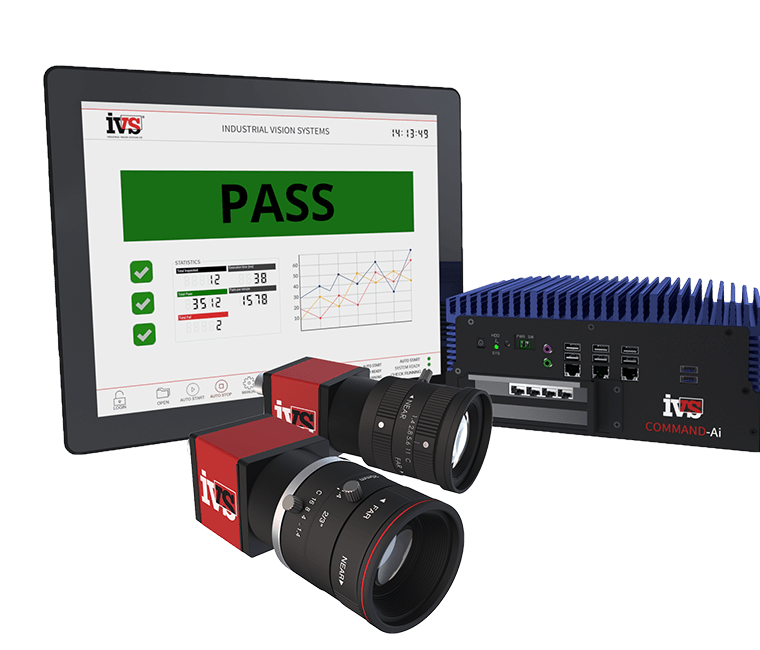This month, we’re going to discuss the aspects of design in your product which could affect the ability to apply automated visual inspection using vision systems to the production process. This can be a frustrating aspect for the engineering and quality managers when they’ve been asked to safeguard bad products going out of the door using machine vision, but there has been no attempt up the chain at the product design stages to either design the product in an effective way to make it simple to manufacture or to apply vision inspection to the process. Once the design has been signed off and validated, it’s often extremely difficult to get small changes instigated, and engineering is then tasked with the mass production and assembly of a product, with in-line visual inspection required.
Very often in medical device manufacturing, due to the long lifetime and cycles of products, the design was conceived months, or even years before it goes through a process of small batch production, before moving to mass production at high run rates – all this with the underlining aspect of validation to GAMP and FDA production protocols. This is the point when automated inspection will be integral to the quality and safeguarding of the consumer as part of the manufacturing process.
From our experience, we see the following red flags which could have been addressed at the design phase, which make the vision system more difficult to design and run.
1. Variants. Often, there can be too many variants of a product with additional variants of sub-assemblies, which means the number of final product variations can run to hundreds. While the vision system may be able to cope with this variation, it makes set-up more costly and ongoing maintenance more difficult. Sometimes, these variations are due to multiple customers down the line wanting subtle changes or unique part numbers, which the design team happily accommodate with no thought on the impact on the manufacturing process. The more variation which can be removed from the design phase, the easier and more cost-effective a solution for machine vision inspection will be.
2. Lack of specification in surface/material conditions. The settings for a machine vision system will depend on a product’s surface and material conditions. This is especially critical in surface inspection or any process where the segmentation of the background is required from the foreground – so presence verification, inclusion detection and even edge detection for gauging and measurement in machine vision. Suppose conditions vary too much due to a lack of specification on colour or surface being included in the design. This variation can make the vision system more susceptible to false failures or higher maintenance. While latest-generation artificial intelligence (AI) vision systems are making such analysis easier and less prone to failure in these conditions, having as little deviation in your incoming image quality for vision inspection makes sense. The design should include a specification on the surface conditions expected for repeatable manufacturing and inspection, which, for example, in plastic mould colour specification can be challenging to specify.
3. Inability to see the inspection area. In the past, we’ve been asked to automatically inspect surfaces which can’t be seen due to a lack of clear view from any angle. The product’s design is such that perhaps datum edges and points are too far away and not easily accessible. The design could be such that an overhang or other feature obscures the view. This is often the case in large sub-assemblies where the datum edge can be in a completely different area and angle to the area where vision inspection will be applied. Design engineers should assess the feasibility of applying automated inspection to the process to account for how easily the vision system can access certain areas and conditions. We often discuss such applications with manufacturing engineers, with the frustration from their side that the design engineers could have incorporated cut-outs or areas which would have provided a clear line of sight for the vision system to be applied.
4. Handling. Products should be designed to be easily handled, fed and presented to a vision system as part of the process. There will nearly always be a contact surface on tooling for handling, which will then limit the area where the vision system can view. Sometimes, this surface requires critical inspection, and the site is obscured due to the product’s design. For example, in syringe body inspection, the plastic body can be held by the top and the bottom and rotated, meaning some areas of the mould are not visible. If a lip had been designed in, the part could have been inspected twice, held differently, thus providing 100% inspection of the entire surface. Small design changes can impact both the manufacturing and automated vision inspection process. Smaller products can be inspected on glass dials and fixtures to mitigate this issue, but the design team should consider these issues at the start of the design process.
Product design needs to get input from the manufacturing and quality team early in the design process. Now vision systems are a standard part of the modern automated production process and an invaluable tool in the industry 4.0 flexible production concept; thought needs to be given to how subtle design changes and more detailed specification requirements on colour and surface quality in the design stage can help the integration and robust use of vision systems.















